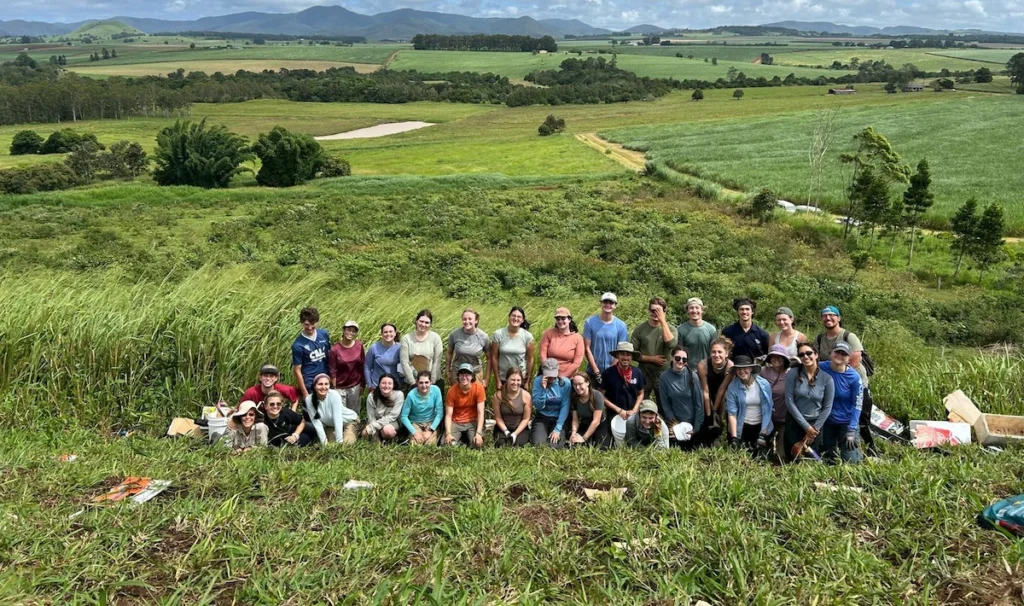Man’s Best Friend, Tree Kangaroo’s Worst Enemy
The Atherton Tablelands within the Wet Tropics of Australia have a unique wildlife that consists of many endemic and relict species adapted to higher elevations within the tropical climate of North Eastern Australia. As anywhere in the world human settlement, land use, and development affect this unique fauna. Beside habitat loss, fragmentation and infrastructure, non-native species and, specifically, non-native predators, introduced by colonizing people, pose a threat to native wildlife. In contrast to other continents, introduced predators seem to have a far greater impact on the Australian native fauna than other factors of human development and land use (Woinarski et al. 2015). Feral cats have been declared as number one threat to many native Australian species and have been identified as major contributor to the decline or even extinction of many Australian small mammals in almost all ecosystems of this continent (Woinarski et al. 2015), followed by foxes and feral dogs. Feral or even roaming dogs can cause population declines of many Australian species since their ability to hunt in packs allows them to target species of various sizes. Addressing the threat to Australian wildlife by feral and roaming dogs in conservation actions can be problematic since many people own dogs as pets or working animals and assume that their dogs do not harm wildlife.

Photo by Sigrid Heise-Pavlov.
The threat of native wildlife by dogs becomes even more paramount when anti-predatory strategies of native Australian species are inappropriate or insufficient. This is the case for the unique Lumholtz’s tree-kangaroo (Dendrolagus lumholtzi) that lives in the canopies of rainforests with most of its populations on the Atherton Tablelands. Research at the Centre for Rainforest Studies shows that tree-kangaroos are able to recognize odours from dogs as odours from predators, but apply an inappropriate anti-predatory strategy by descending from the canopy to the ground (Heise-Pavlov 2016). This behaviour increases their risk to fall victim to encounters with dogs. It is therefore not surprising that wildlife caretakers, who deal with injured tree-kangaroos or/and raise juvenile orphaned tree-kangaroos who come into care after their mother had been killed, are particularly concerned about dogs roaming around. But where to start to mitigate this threat? Perhaps with increasing the awareness of people to recognize the negative impact of dogs on our wildlife here on the Atherton Tablelands? Last year students at the Centre for Rainforest Studies started to explore the attitude of locals towards this issue. They worked out a questionnaire that tries to capture people’s knowledge on the impact of introduced species on our wildlife and their opinions on how domestic dogs or cats should be kept to minimize their potential impact on our wildlife. Students of this semester continued with this work and, after they had revised the questionnaire, interviewed locals at various places on the Atherton Tablelands. But they went even further!

Photo by Ana Toumpas.
They also observed a released orphaned tree-kangaroo to understand how it adapts to the forest after being raised in a wildlife caretaker’s home and to observe how it moves within the canopy but also on the ground where it easily can be chased by uncontrolled or feral dogs. They listened to the concerns of a wildlife caretaker about the situation of roaming and feral dogs on the Atherton Tablelands who can destroy within minutes the year-long efforts of caretakers to raise orphaned tree-kangaroos before they can be released.
After the collation of all the interviews and observation records students wrote two mock scientific papers on the results which will help us to take further steps in developing effective strategies to reduce the existing threat of our unique wildlife by domestic and feral dogs.
Heise-Pavlov SR. 2016. Evolutionary Aspects of the Use of Predator Odors in Antipredator Behaviors of Lumholtz’s Tree-Kangaroos (Dendrolagus lumholtzi). Chemical Signals in Vertebrates 13: Springer. pp 261-280.
Woinarski J, Burbidge AA, NHarrison PL. 2015. Ongoing unraveling of a continental fauna: decline and extinction of Australian mammals since European settlement. PNAS 112(15):4531-4540.
Related Posts

Cinder Cone Chronicles: Lessons from Drought, Data, and Determination

